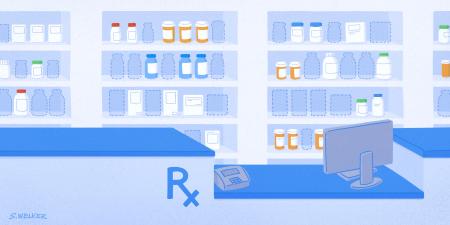Abstract
This brief suggests a few ethical reasons to interrogate our bioproduct supply chains as we have begun interrogating our food chains.
Bioprospecting and Biopiracy
Numerous articles since the early 2000s offer distinctions between bioprospecting and biopiracy. Bioprospecting characterizes practices of identifying what I’ll call, for the purposes of this article, bioproducts (eg, flowers, trees, fungi, nonhuman animals, these organisms’ metabolites or other byproducts,1 polysaccharides, or cell walls2) in order to try to harvest them to generate commercial applications, including in health care. Biopiracy characterizes bioprospecting that happens without profit sharing with communities whose material and epistemic resources have been taken.3
Indigenous knowledge about how to apply bioproducts to healing, when taken without acknowledgement, credit, or profit sharing, is a kind of colonial epistemic biopiracy that deserves more thoroughgoing attention from bioethics. Medicinal ethnobotany4 is a field investigating what Indigenous healers have long known about some plants’ addictive properties,5 for example. We also now know that the source of many compounds now considered “essential medicines”6 is one single life-giving entity; perhaps we have too long taken for granted the clinical applications of bioproducts7 that grow on, in, or arise from our common ground, the earth’s crust.
Consumption and Character
An ethical upshot here is that we tend to think about critical medicine supply chains in terms of manufacturing, regulation, and transportation. We tend not to ask about how we transform endemic bioproducts (and the landscapes of their origins) in agribusiness practices (good, bad, or neutral) or about how we’ve normalized and commodified our taking and making of these bioproducts. A point of this essay is to suggest the importance of asking questions such as this one: What do bioproduction and its attendant agribusiness practices express about our characters—as clinicians, patients, caregivers, consumers—if bioprospecting is rarely, if ever, separable from biopiracy?
In recent years, we have started to pay closer ethical attention to and ask critical questions about our foods’ origins, our agribusiness practices, and what they suggest about who we are when we eat in certain ways. Michael Pollan,8 for example, traces a few meals back to their days as photosynthesizers. It is time for bioethics to lead similar investigations into the origins of bioproducts and agribusiness practices that generate many of our medicines, how they’re sourced, and who has the most to gain or lose by taking and making them as we do. Probing bioproducts’ sources as we have begun probing how our foods are sourced would likely illuminate distinctions between good and bad actors in industrial bioprospecting. Interrogating our practices of consuming medicines that are bioproducts has at least as much value to our characters as interrogating how we source our foods.
To say that we are what we eat is to suggest that our characters are importantly inhabited, dependent upon, and situated by habits of industrialization and consumption we endorse when we grow, market, purchase, and prepare foods. Ways we source medicines, especially from bioproducts, also compose our characters, inhabit who we are physically and ethically, and express how seriously we regard our roles as civic, environmental, and commercial stewards. Thinking more deeply about how we source medicinal bioproducts gives us opportunities to consider whether and how we can or should source them more justly, and not just to avoid the vices of being biopirates.
If health equity is to be more than a trend, bioethics must more deeply investigate the nature and scope of our individual and collective characterological needs to at least mitigate our domestic and international participation in agribusiness practices (eg, unsustainable land use decisions, epistemic theft) that incur costs to and pose risks to some of us when others of us derive inequitable health benefits over the short- or long-term.
References
-
Wong K. Mother nature’s medicine cabinet. Scientific American. April 9, 2001. Accessed December 1, 2023. https://www.scientificamerican.com/article/mother-natures-medicine-c/
-
Pleszczyńska M, Wiater A, Siwulski M, et al. Cultivation and utility of Piptoporus betulinus fruiting bodies as a source of anticancer agents. World J Microbiol Biotechnol. 2016;32(9):151.
- Efferth T, Banerjee M, Paul NW, et al. Biopiracy of natural products and good bioprospecting practice. Phytomedicine. 2016;23(2):166-173.
-
US Forest Service. Medicinal botany. US Department of Agriculture. Accessed December 1, 2023. https://www.fs.usda.gov/wildflowers/ethnobotany/medicinal/index.shtml
-
Cannabis, coca, and poppy: nature’s addictive plants. Drug Enforcement Administration Museum. Accessed December 1, 2023. https://museum.dea.gov/exhibits/online-exhibits/cannabis-coca-and-poppy-natures-addictive-plants
-
Pavid K. Aspirin, morphine and chemotherapy: the essential medicines powered by plants. Natural History Museum. February 19, 2021. Updated June 21, 2023. Accessed December 1, 2023. https://www.nhm.ac.uk/discover/essential-medicines-powered-by-plants.html
-
Kück U, Bloemendal S, Teichert I. Putting fungi to work: harvesting a cornucopia of drugs, toxins, and antibiotics. PLoS Pathog. 2014;10(3):e1003950.
-
Pollan M. The Omnivore’s Dilemma: The Search for a Perfect Meal in a Fast-Food World. Bloomsbury Publishing; 2011.



